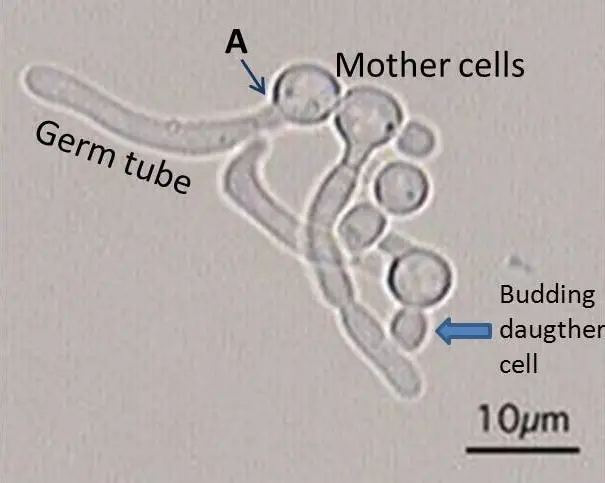The Germ Tube Test, also known as Reynold’s Brande phenomena is a screening procedure which is used for the identification and differentiation of Candida albicans from other yeasts.
Principle of the Germ Tube Test
This test allows the detection of the Germ Tubes which are the initial stage of hyphae formation. These are the short, non-septate germinating hyphae which are one half the width and three to four times the legnrh of the yeast from which they originate. Approximately 95-97% of Candida albicans isolate develop germ tube when incubated in a proteinaceous media at 35C for 2.5-3 hours.
Materials required
- Sheep serum or pooled human serum
- Test tube
- Wooden applicator stick
- Microscopic glass slide
- Cover slip
- Pasteur pipette
- Micropipette
- Incubator
Procedure of germ tube test
- Put about 0.5 ml of sheep serum or pooled human serum in a test tube
- With a sterile wooden applicator stick, lightly touch a yeast colony (1-2 large colonies or 3-4 small colonies) and then place the stick into the serum
- Suspend the yeast in serum and discard the stick
- Incubate the tube for 2-3 hours in a 35-37C incubator
- After incubation, place a drop of suspension on a clean microscopic slide and coverslip it
- Examine the wet mount microscopically using low power objective. Use high power objective to confirm the presence or absence of germ tubes.
Result and Interpretation
Presence of germ tube : Candida albicans
Absence of germ tube : other yeasts


Nice articles….
Thank you @sam, keep visiting 🙂
a pinch of dextrose needs to be added….which enhances the growth…..and observation should be done evry half an hour.
other methods of detection of germ tube?
what will happen if incubated moe than two hr?
why plasma is not used?